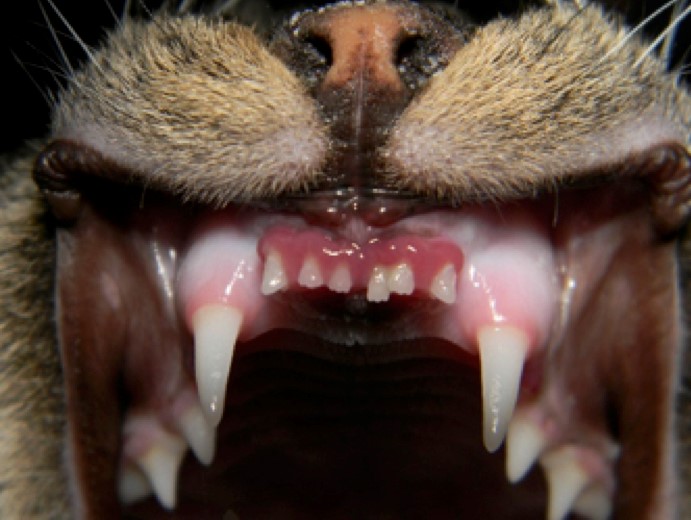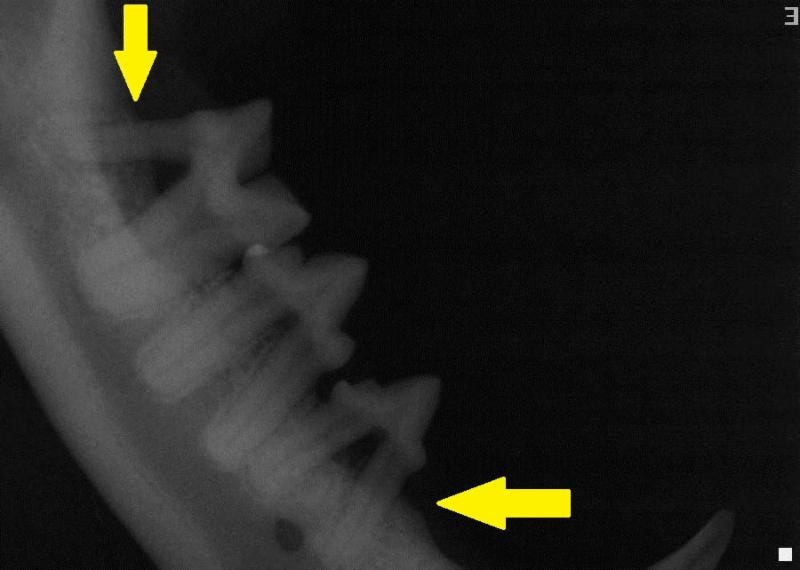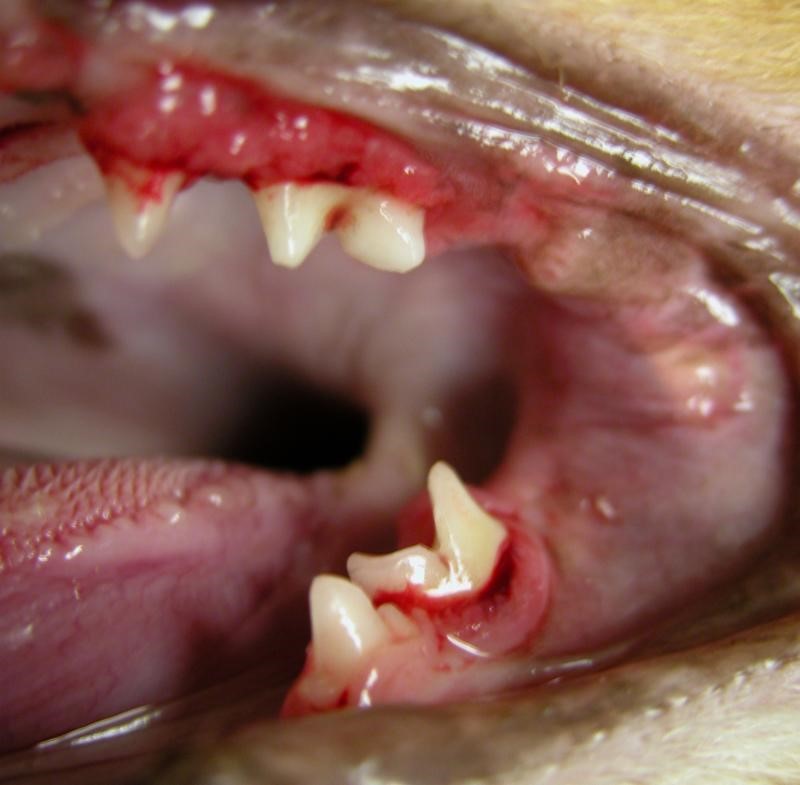Periodontal disease is common in feline practice. Without regular dental care, it usually becomes apparent after 3-5 years of age. Juvenile onset feline gingivitis/periodontitis is a form of periodontal disease occasionally seen in cats less than 1 year of age.
What is feline gingivitis?
In these patients, intense gingivitis may begin at the time of tooth eruption, progressing to periodontitis without aggressive early treatment. In many cases, the inflammation is limited to the attached gingiva and does not extend into the oral mucosa. Some cases progress to periodontal disease and attachment loss, which is damage to the supporting structures of the dentition, including attached gingiva, periodontal ligament, cementum on the root surface and alveolar bone. FJOG/P may be distinguished from chronic feline gingivostomatitis (“stomatitis”) by the early onset of disease, absence of caudal oral mucositis (“faucitis”) and limitation of the pathology to the attached gingiva in many cases.

Typical appearance of Juvenile Gingivitis in a 7 month old cat. The inflammation is limited to the attached gingiva.
What causes feline gingivitis?
The etiology of this disease is unknown, but one possible cause is an inappropriate host immune response to plaque biofilm. Histopathology may be indicated if an underlying condition is suspected or the clinical appearance is atypical. FeLV and FIV viral status should be evaluated. Bartonella sp. testing may be considered in unresponsive cases, but this test has not met with widespread acceptance. Bacterial culture and sensitivity is unrewarding.
What are the signs of feline gingivitis?
Clinical signs may include oral malodor, gingival inflammation and/or bleeding, inappetence and dysphagia. Unfortunately, most cats do not manifest any behavioral changes that might suggest painful pathology, delaying appropriate treatment. Signs of periodontitis may be limited initially to the incisors, but can eventually extend to other portions of the dentition.
Oral examination and dental radiographs are the most important diagnostic tools. Tooth resorption (“resorptive lesions”) may be present in affected cats at less than 1 year of age. Dental radiographs may be normal but can reveal early bone loss if gingivitis progresses to periodontitis.

In this young patient, the inflammatory process has extended beyond the attached gingiva into the oral mucosa.
How is feline gingivitis treated?
With diligent treatment, the condition may regress by 1-3 years of age. Comprehensive plaque control is critical and owner commitment to aggressive treatment is mandatory to have any chance of achieving remission. The mainstay of treatment is frequent (q. 3-4 months) dental prophylaxis with full mouth radiographs. These cleanings need to be performed to remove plaque accumulation even if there is no visible calculus.
Daily dental homecare is helpful. Ideally, brushing is part of this regimen, but is extremely challenging in a young cat, let alone one with painful gingival tissue. Zinc Ascorbate gel (Maxiguard) is very beneficial for some feline patients. Unlike chlorhexidine rinses, this product is generally well accepted by cats since it is odorless and tasteless. Zinc ascorbate increases collagen formation to strengthen gingival tissue, binds volatile sulfur compounds to decrease halitosis and has antibacterial properties.
Additional adjunctive treatments may include prescription dental diets, dental treats and topically applied esterified fatty acid products such as EFAC or 1-TDC, which may provide some local anti-inflammatory effect.
Board-Certified Veterinary Dentist in Montana
Client education early in the course of the disease is critical and a fair prognosis can be given with comprehensive treatment. Clients should be advised that some periodontal tissue loss or tooth resorption requiring extractions may occur, even with regular dental prophylaxis. Without treatment, extensive tooth loss is likely. Even with treatment, some patients may still require full mouth extractions.
Although challenging, juvenile gingivitis/periodontitis may resolve after 1-3 years with diligent treatment, avoiding extraction of most, if not all, of the teeth. If the condition is persistent, the owner can also be offered the option of full-mouth extractions at an early age, but this treatment is associated with significant surgical trauma and eliminates the ability of the patient to chew their food normally.
At Montana Pet Dentistry and Oral Surgery, we are fully equipped to diagnose and treat all forms of feline dental disease. Call us today to schedule an appointment: 406-599-4789.
Photo by Yerlin Matu on Unsplash (11/13/2020)

